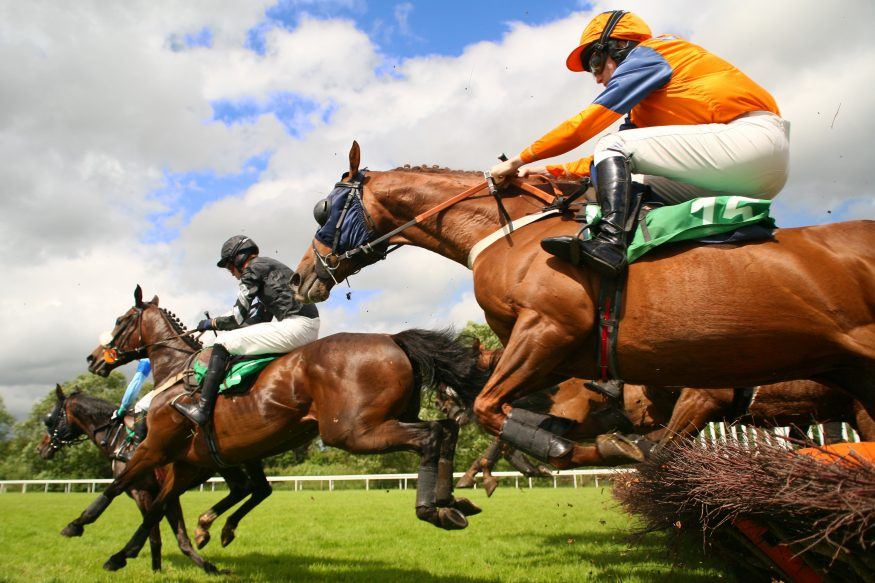Strategies for Placing Late Bets in Horse Racing

Understanding the Advantages of Late Betting
Betting just before a horse race begins can give you unique insights that earlier bettors miss. Observing race-day conditions, horse behavior, and market shifts means you can make more informed decisions. Being present at the track offers additional advantages over those watching from a distance, as you’ll have a firsthand look at horses before they race. This guide walks through the process of placing late bets, offering practical tips so you can maximize your edge at the racetrack.
Preparation: Research and Shortlisting Potential Horses
Preparation is vital before you even reach the racetrack. Start by reviewing race programs or racing forms and analyzing statistics at home. Dig into factors like the recent performance history of horses, jockeys, and stables. Assemble a list of horses who seem strong contenders, and focus your attention on them during pre-race activities.
Pay close attention to changes in the betting market prior to the event. For example, if a favorite’s odds drift unexpectedly on the morning of the race, it could indicate concerns about its readiness-something you’ll want to verify during the paddock parade.
Race conditions are also crucial. Racetracks announce updates about the ground and potential non-runners or last-minute jockey swaps. Certain horses excel in particular conditions-some thrive on heavy ground, while others struggle unless it’s fast. Here are the common track conditions you may hear:
- Firm
- Good
- Soft
- Yielding
- Heavy
- Fast
- Wet Fast
- Standard
- Slow
- Muddy
- Sloppy
- Sealed
Weigh all this information for each of your shortlisted runners when preparing for a late wager.
Using Binoculars for an Edge
Bring a reliable pair of binoculars with you to the racetrack. While it may sound old-fashioned, a good magnified view gives you the ability to closely observe subtle cues in a horse’s demeanor that might not be obvious from a distance. Given the expansive size of most tracks, binoculars are invaluable for watching horses both during the parade and as they warm up.
Optimal Positioning: Where to Stand for Late Betting
To maximize your opportunities for late bets, position yourself where you can watch both the parade ring and the horses heading down to the starting area. At the same time, have quick access to a betting window or automated teller.
If you’re betting online, ensure your spot provides a strong mobile signal-crowds can sometimes impact network connections. Study the site plan of the racetrack ahead of time so you can choose the best spot for quick movement between viewing and betting areas.
Evaluating Horses During Pre-Race Activities
Once you’re settled, watch the horses in the paddock and as they make their way to the starting gate. Assess all horses objectively-even those not initially on your shortlist. Horses can react differently to raceday pressure, and their pre-race conduct is often telling.
Key observations include:
- Horses acting overly nervous, sweating profusely, or resisting handlers might be best avoided-unless you know this is normal for them.
- Two handlers leading a horse instead of one suggests possible behavioral issues.
- If a horse is deliberately separated from the others on the way to the start, it might not be settling well.
- Look for smooth movement and a comfortable head carriage. Excessive bucking or a low, tense head are possible negatives.
- The jockey’s control is also revealing-if they’re fighting to hold the horse back, it could indicate edginess.
Take mental notes across the field-behaviors can change your perspective on which horses deserve your wager.
Narrowing Down Your Selections
Based on your paddock observations, refine your shortlist to the horse (or horses) that not only look best physically but also appear well-behaved and confident. Horses that parade quietly but vibrantly, moving fluidly under their jockey, are particularly attractive candidates for a late bet. Revisit their previous form and conditions to ensure your observations match historical performance.
Analyzing Odds and Shop for Value
Before you commit, check the current odds on your chosen horse. Late market moves can be dramatic. If your selection’s price shrinks, it’s often a good sign that others have spotted positive qualities too. But don’t let drifting odds discourage you either-sometimes, longer odds can mean greater value.
Always compare prices on track with those offered by online sportsbooks. Also, check the betting exchanges for discrepancies. Sometimes, the betting exchange odds lead fixed-odds bookmakers, and you might find a better price there.
Remember, you aren’t limited to betting on a win. Depending on your expertise, consider exotic bets like forecasts, trifectas, or place options for expanded opportunities.
Placing Your Bet Efficiently
Queues at the betting windows can get long close to post time, so write out your bet slips in advance to save time. If you use automated kiosks, familiarize yourself with the process beforehand for speed.
If you’re wagering online, ensure your betting app or website is open and your device is connected so you can strike when you’re ready. Online betting cuts down on queue time-letting you place wagers even seconds before the starter’s signal.
Frequently Asked Questions About Late Betting in Horse Racing
How close to the start can I place a bet?
You can place a bet right up until the horses are loaded in the starting gates for a flat race. On-track and online bookmakers typically suspend betting once the horses are officially "under starter's orders." Online options are usually available until the last seconds before the race launches.
What are the main benefits of betting late?
Betting late gives you access to the most up-to-date information, including current horse behavior and last-minute changes. Having seen the horses up close enables more informed choices compared to pre-race wagers.
Are there any downsides to waiting to bet?
The biggest drawback is that the odds on your preferred horse may shorten as positive signs are spotted by others. This could mean missing out on higher early prices. Waiting longer also risks encountering crowded betting windows or technical delays online.
Is there greater potential to win by waiting to bet?
Potential returns vary. Sometimes, a late bet gets you better odds. Other times, waiting means you accept a lower price. Over time, experience helps you judge whether to bet early or late, balancing price opportunities with the insights gathered by waiting.
Final Thoughts on Mastering Late Betting at the Track
Betting late in horse racing is both an art and a science. Successful late bettors combine thorough preparation, sharp observation, and smart positioning-whether at the track or online. Keep evolving your approach and learning from each race to improve your late betting results. For more racing news and tips, stay updated with expert resources and guides.













